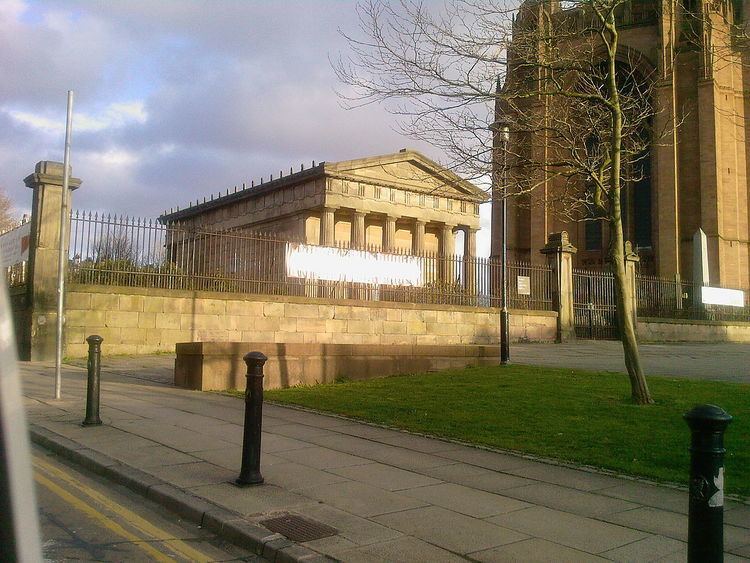OS grid reference SJ 354 895 Designated 28 June 1952 Phone +44 151 233 3000 | Built 1829 Reference no. 1063282 Opened 1829 Architect John Foster | |
 | ||
Location Liverpool, Merseyside, England Similar Toxteth Unitarian Chapel, Church of St Clare - Liverpool, County Sessions House - Li, German Church - Liverpool, Gustav Adolf Church - L | ||
The oratory liverpool
The Oratory stands to the north of Liverpool Cathedral in Merseyside, England. It was originally the mortuary chapel to St James Cemetery, and houses a collection of 19th-century sculpture and important funeral monuments as part of the Walker Art Gallery. It is a Grade I listed building in the National Heritage List for England.
Contents
History
The Oratory was built in 1829, and used for funeral services before burials in the adjacent cemetery. It was designed by John Foster. When the cemetery closed, the building fell into disuse. In 1986 it came under the care of National Museums Liverpool, and is used to contain a collection of sculpture and statues.
Architecture
The building is in the form of a Greek Doric temple. At each end is a portico with six columns. There are no windows and the building is lit from above. Inside, a coffered ceiling is supported by Ionic columns. Pollard and Pevsner consider this to be Foster's best surviving building. On 28 June 1952 it was designated as a Grade I listed building. In the National Heritage List for England it is described as "one of the purest monuments of the Greek Revival in England". Around the Oratory are cast iron railings and gate piers that have been listed at Grade II.
Collection
Inside the building is a collection of monuments, mainly Neoclassical reliefs, many of which were brought here from demolished buildings in the 1980s. These include a monument dated 1834 to the Nicholson family by Francis Chantrey, one to William Earle, who died in 1839, by John Gibson, to Dr William Stevenson, who died in 1853, by J. A. P. Macbride, to William Hammerton, who died in 1832, by Gibson, to William Ewart, who died in 1823, by Joseph Gott, to Emily Robinson, who died in 1829, by Gibson, and to Agnes Jones, who died in 1868, by Pietro Tenerani. There is also a statue of William Huskisson by Gibson that was formerly in the Custom House.
